Hawthorn trees provide a vital source of food and shelter for a wide variety of animals. The dense leaves and thorny branches provide safe nesting spaces for birds like thrushes, blackbirds and bullfinches. as well as providing safe egg laying spaces and food for over 300 species of insect and other invertebrates, including butterflies, moths, beetles, hoverflies, spiders and snails.

Hawthorn leaves are bright green in colour with 5-7 teethed lobes, they grow along thorny branches and provide shade and shelter in the spring and summer months, as well as food for a variety of wildlife including butterfly and moth caterpillars. Dormice, wood mice and nesting birds in turn also rely on the many species of caterpillar that feed on hawthorn leaves as food for themselves and their young. Deer and rabbits will also feed on the twigs and bark from hawthorn trees.

In May the trees come alive with beautiful blossoms of sweet smelling, five petalled, white flowers. These nectar rich blossoms provide an important source of food for pollinating insects like hoverflies, bees, butterflies and beetles as well as small mammals like dormice who eat the whole flower.
Once pollinated the petals of the blossoms drop off as the flower begins to form into a berry like fruit which are often called haws or mayhaws. The growing berries start of as green but turn a bright berry red when they have fully grown and ripened. Hawthorn berries provide a calorie rich, source of food for small mammals and birds like yellow hammers, thrushes and waxwings over the leaner autumn and winter months

The fleshy fruit from the berries (but not the seeds as they contain cyanide) are also edible for humans, they provide a rich source of antioxidants, minerals, fibre, amino acids and vitamin C. Hawthorn berries can be eaten raw or cooked (Don’t forget to remove the seeds first) and are often used to make hawthorn jelly or wine. The newly grown young leaves, flower buds and flowers from hawthorn trees are also edible and can be added freshly washed to salads.

The wood and branches from hawthorn trees has also been historically used to make tool handles, fish hooks, fences, cabinets, boxes, boat parts and charcoal. They thorny, dense nature of hawthorn trees also made them perfect to use to plant as border hedges to protect settlements, farm animals, crops and land.
Trees in general are such an important and vital part of our ecosystem, as they create oxygen, soak up carbon dioxide, prevent soil erosion and retain nutrients in the soil as well as providing food and shelter for humans and wildlife. Even when an hawthorn tree tree dies it still plays a vital role in the ecosystem. The dead wood creates nitrogen for the soil and provides habitats for a variety of animals.

You can find lots of easy hawthorn activity ideas and recipes below to help you learn more about these amazing trees!
1. Go on a hawthorn wildlife safari
You will often find pollinating insects like hoverflies and beetles on or around hawthorn blossoms in the spring feeding on the nectar rich flowers. The tops and undersides of hawthorn leaves are also often teeming with insects, eggs, caterpillars and larva that you would normally overlook. It’s the perfect place for them to shelter away from predators, wind and rain as well as often providing a source of food. You could take a notepad or camera with you to record your finds. You can also help citizen science by recording any minibeasts you find on national databases like Nature’s Calendar or iRecord.

2. Watch Hawthorn berries form
Overtime plants have evolved a variety of different and specialized techniques to release and spread their seeds as far and as wide as possible giving them a greater chance of survival and success. Some seeds are designed to be carried on the wind, some are released with explosive popping forces, others hitchhike by sticking or hooking onto passing animals and a variety of others rely on being eaten. Hawthorn berries have evolved to be eaten by small mammals and birds who then spread the seeds far and wide via their droppings. You can find hawthorn blossoms at the beginning of spring and then watch them over time to see how they drop their petals and start to develop into berries over the summer, ripening by autumn.

3. Hawthorn Nature Painting
Nature painting is a simple activity for children of all ages, Just dip hawthorn leaves into paint and use them as natural paintbrushes or paint, print and mark make with. *Don’t forget however that hawthorn branches have thorns, so be careful when picking hawthorn leaves. How about experimenting with other different natural materials to see what variety of marks you can make by using different shapes and textures. You could also paint directly onto the leaves to decorate them. Or lay the leaves onto paper or cardboard and then paint over them to capture the interesting outlines. Recycled cardboard is a great environmentally material to use instead of paper. Simply cut out panels from old cardboard boxes and packaging.

4. Hawthorn water and ice play
Water play is a great sensory activity for children of all ages. Hawthorn leaves and flowers scattered in the water help to add extra scent, colour and texture for the children to enjoy and explore. *Just please be aware of the health and safety and risks with babies and don’t leave children unattended around water. After you finish you can recycle the water and materials by pouring them into different shaped containers or ice cube trays to freeze and replay with as ice blocks another day. It’s fascinating to see the objects trapped in the ice.

5. Hawthorn flower ice cubes
You could also make decorative edible ice cubes for drinks by using freshly washed hawthorn flowers and frozen with drinking water in ice cube trays. You can then pop them into drinks as pretty floral decorations. *Please just be aware of the choking hazard of the ice cubes or any other materials you use with small children.

6. Hawthorn blossom cordial
Hawthorn blossom cordial is a beautifully fragrant and refreshing drink that is also so simple and easy to make. You can also use it as a syrup to flavour cakes, cocktails, lemonade, porridge, yogurt and ice cream. All you will need is:
- 5 cups of hawthorn flowers (just the white flowers with any green parts cut off)
- 2 cups of caster sugar
- 2 cups of water
- 1 lemon
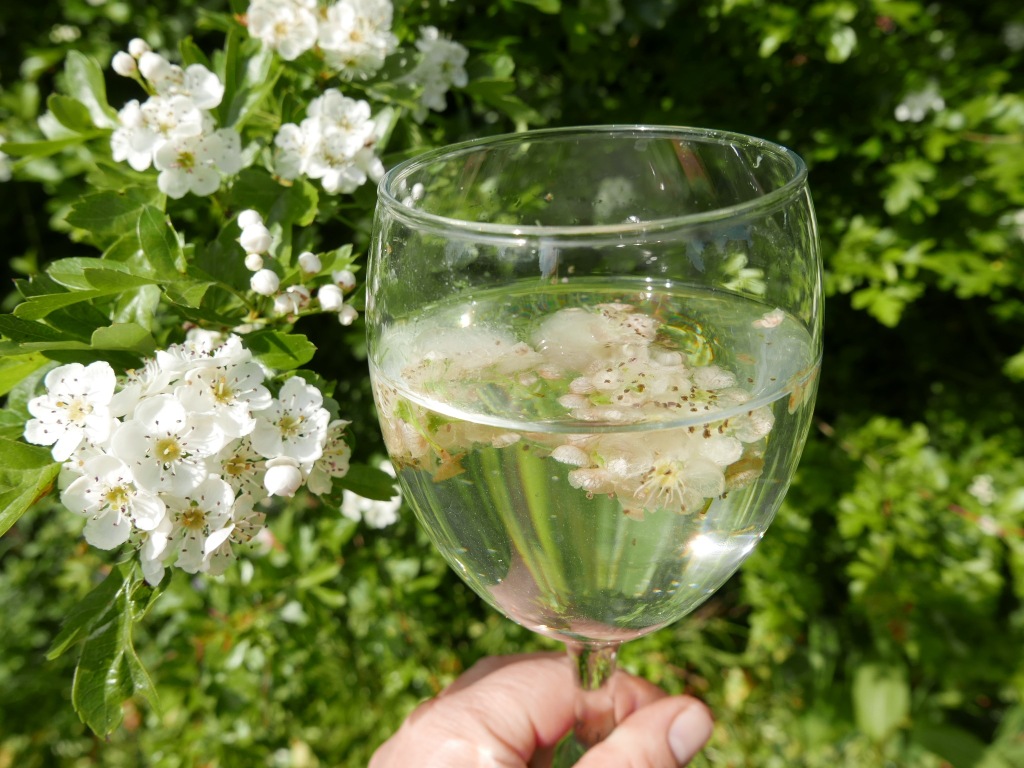
Dissolve the sugar by placing it in a pan with the water and bringing it to the boil for 2-5 minutes. Let the water cool for a few minutes and then add in the freshly washed hawthorn flowers and the juice from the leman. Heat the pan on the lowest heat for 20 minutes and then leave it to cool. Finally strain the mixture though a sieve so you are left with a finished cordial that you can pour into a sterilised bottle or jam jar.
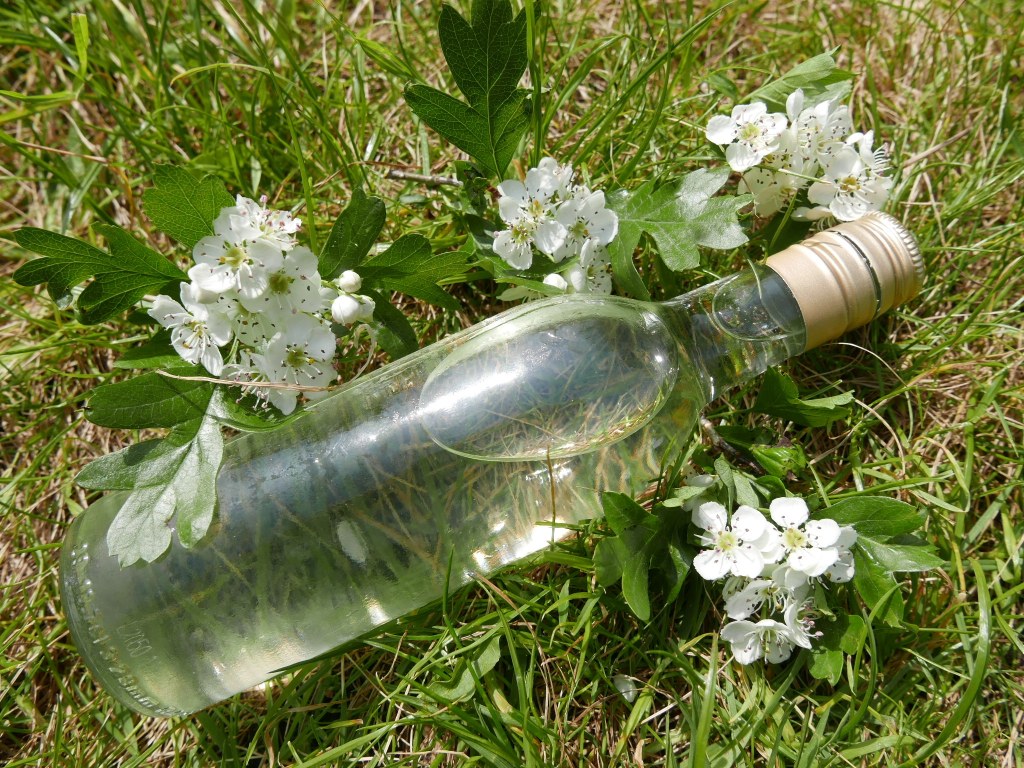
You can sterilise old jam jars and bottles by rinsing them out well with soapy water then filling them with boiling water for 5 minutes or by placing them in a warm oven for a few minutes (caution this will make the glass really hot, so handle with care and oven gloves.) Place the lid on the jars or bottles whilst still hot and leave to cool completely. You can keep the syrup in a sterilized bottle (or jar) in the fridge for a week or too. Or freeze it in a plastic container to keep it for longer. It should keep in the fridge for up to 6 weeks or you could freeze it in ice cube trays so you can pop them out and add them to drinks whenever you like.
7. Hawthorn berry tea
You can also make hawthorn berry tea using ripe and freshly picked and washed hawthorn leaves. Simply pour boiling water over the hawthorn berries and leave them to steep and soak for 10-15 minutes. Finally strain or scoop out the berries and enjoy your teawarm or as iced tea.

8. Hawthorn blossom or berry lip balm
It is surprisingly simple and easy to make your own natural hawthorn blossom or berry lip balm using just 3 ingredients. First you need a handful of hawthorn blossoms or berries, Bees wax or the vegan alternative of candelilla wax and a carrier oil like olive oil, sunflower oil, coconut oil sweet almond oil or castor oil. First place the blossoms or berries in a jam jar and cover them with your choice of carrier oil. Then place the jar on a window sill or warm place to infuse for 2 weeks. Make sure you stir the oil every few days and make sure all the flowers or berries are completely covered with oil.
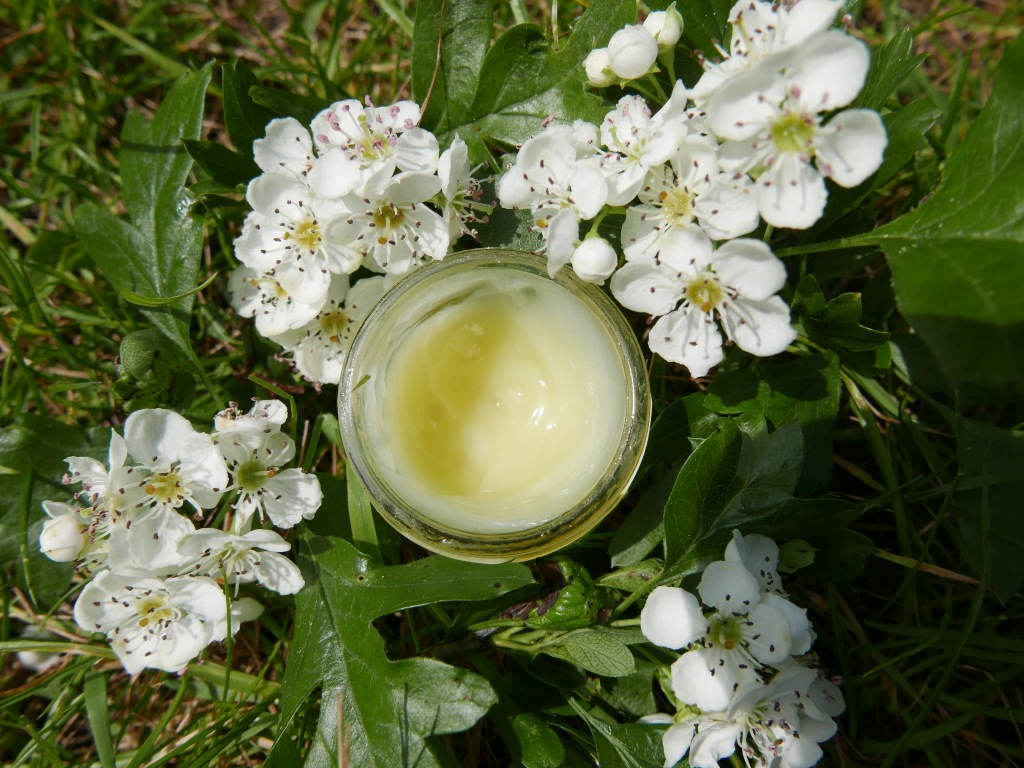
After 2 weeks strain the oil through a muslin a cup or jug and measure the weight. If you are using bees wax you will need 1 part beeswax to 3 parts oil (For example 300g of oil only needs 100g of beeswax), If you are using candellia oil you want to use 1 part to 4 parts oil (for example 200g of oil needs 50g of beeswax). Pour the oil into an old saucepan and gently heat, add in the bees wax of candillia wax and stir until its fully melted and mixed together. Pour it into a sterilised container* or pot like an old mini jam jar and leave to cool and set. If your lip balm turns out too soft or hard you can always re-melt it and add in more oil or wax.
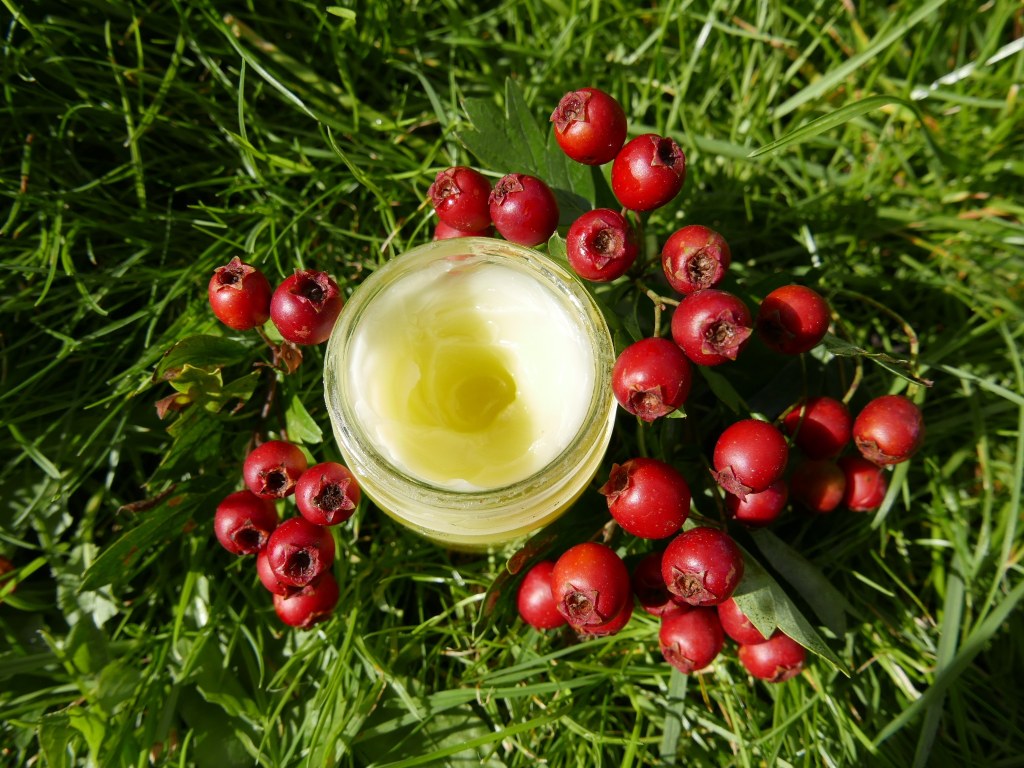
9. Hawthorn tree collages
All you need to make a tree collage is some recycled cardboard, double sided tape or glue and some leaves. Simply draw or cut a tree shape on or out of the cardboard. Then stick or glue any natural materials you find on a woodland walk like leaves, sticks, stones, grass, plant stems, bark, fallen fruit, nuts, seeds and flowers*. *But pretty please don’t pick any wild flowers, only collect ones you have grown yourself or fallen ones you find on the floor.
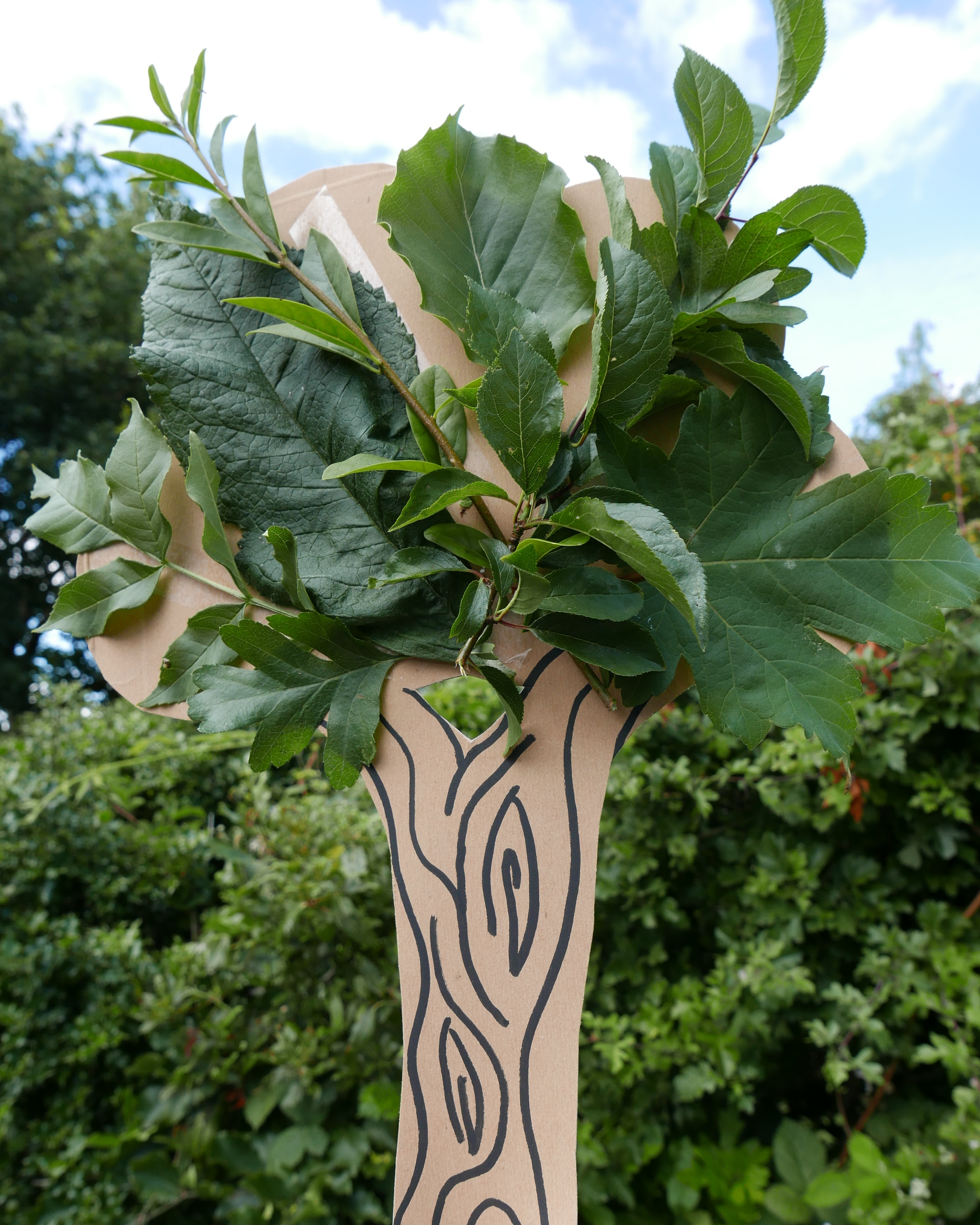
10. Grow a hawthorn tree or hedge
Hawthorn trees and hedges provide fantastic shelter, homes, food, nesting sites for a variety of wildlife from birds and mammals to insects, amphibians and reptiles. You could plant a single tree or plant several in a line to form a hedge. The best kinds of hedges are the ones that are made up of a variety of native trees and shrubs as they provide a wider variety of habitats and food sources. Hazel, hawthorn, crab apple, blackthorn, alder, spindle and field maple all make great hedge environments. You can also add in climbing plants like ivy, clematis or bramble to create additional sources of food and egg laying habitats for pollinating insects.

For day 10 of 30 days wild 2024, we looked for wildlife amongst the hawthorn leaves and enjoyed some branch tapping…. until we discovered a wasps nest in the hawthorn tree! We quickly stopped branch tapping… and instead watched them build their beautiful nest.
If you like this you might like to try:
Elderflower recipes and Elder tree activity ideas


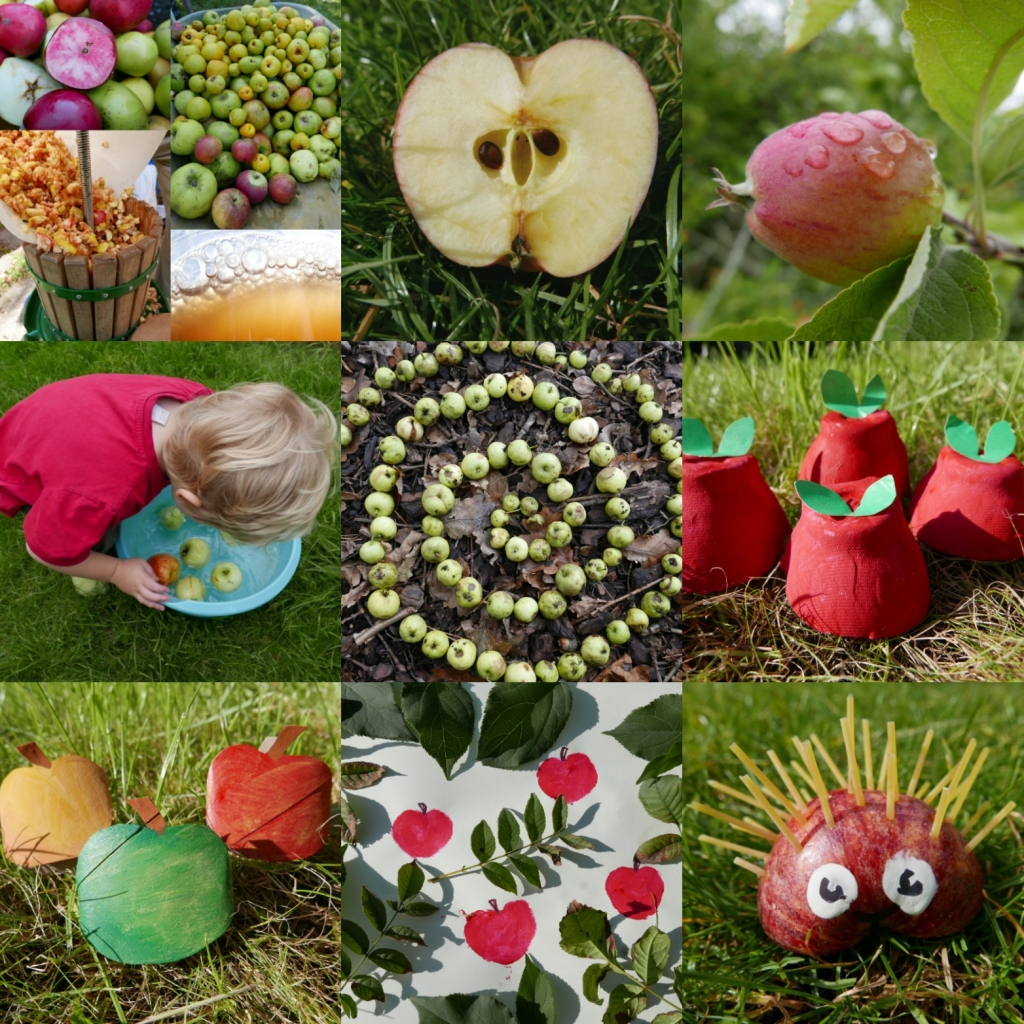
Horse Chestnut/Conker activity ideas.


